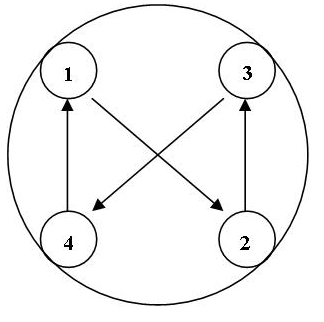With the exception of 2011, when Japan's catastrophic earthquake and Thailand flooding choked production down to a trickle, the CR-V has been the bestseller in this class for years, and often the bestseller of all SUVs, great and small. Which raises the tricky question of what's next?
Honda essentially invented the segment in 1995 with the first-generation CR-V, and subsequent generations have kept the Civic-based crossover at the front of the pack.
Introduced last fall, Honda's response to the "what's next" challenge was conservative, even cautious. The wheelbase is unchanged at 103.1 inches -- shortest in this group -- while length and height shrink an inch, to 178.1 and 65.1, respectively.
This puts the CR-V at the small end of our test-SUV spectrum, but in typical Honda fashion its interior volume seems to belie the exterior dimensions. Basic cargo capacity -- the space behind the rear seats -- is substantial at 37 cubic feet, as is the space with the rear seats folded: 71 cubic feet. There's also plenty of passenger room, front and rear, and numerous nooks and cubbies for small-object storage, another typical Honda strong suit.
Passive safety features are top drawer -- five stars overall from the National Highway Traffic Safety Administration.
But the interior element that immediately grabs eyeballs is the quality of the materials, the straightforward logic of the various controls, the supportive front bucket seats, and the excellent forward sightlines. Honda's old advertising tagline -- "we make it simple" -- is in evidence here. Acclimating oneself to this vehicle is as easy as getting in, starting the engine, and driving off.
Pricing makes the CR-V's many strengths even more appealing. The window sticker bottom line on our EX-L Navi tester (Honda counts navigation-equipped vehicles as separate trim levels) was $29,575. This includes pretty much everything in the CR-V inventory -- (inhale) leather upholstery and trim, navigation system with voice recognition and rear view camera, power moonroof, DVD entertainment system, heated front seats with driver-side power adjustability, Bluetooth connectivity with streaming audio, USB audio interface and Pandora connectivity, SMS text messaging, 328-watt 7-speaker premium audio, 17-inch aluminum alloy wheels (exhale).
A power rear liftgate would be a useful addition to the foregoing, as would a blind-spot warning system, a la Ford. And, of course, in real 4-season climates all-wheel drive is always welcome -- and available, for a price. But beyond that, it's hard to think of anything to add.
One of the reasons Honda is able to offer the new CR-V with attractive pricing can be found in the powertrain. The engineers have squeezed a little more thrust out of the 2.4-liter engine -- now with 185 horsepower and 163 lb-ft of torque -- but while other carmakers are embracing the efficiency of direct fuel injection, Honda has been resisting the cost.
Honda also resisted the trend to 6-speed automatic transmissions -- the CR-V retains the 5-speed automatic of the previous generation. However, this doesn't seem to extract much of a fuel economy penalty -- at 23 mpg city/31 highway the CR-V's EPA ratings are competitive.
Similarly, the Honda's straight-line performance stacks up well versus its 6-speed rivals: 0-to-60 mph takes about 8.5 seconds.
The Honda CR-V isn't as entertaining an SUV to drive as the Ford Escape or the Mazda CX-5. The suspension tuning is softer, the new electric power steering system is novocaine numb, conveying essentially no information to the driver, and the evolutionary styling update, with its bigger rear roof pillar, creates a good-sized rear quarter blind spot.
But the CR-V's blend of smooth ride, smooth power, competitive fuel economy, outstanding assembly quality, first rate materials, quiet operation, exceptional comfort, and excellent value story trump its few soft points. Just as it trumps the rest of this field.
Courtesy of Kelley Blue Book
















